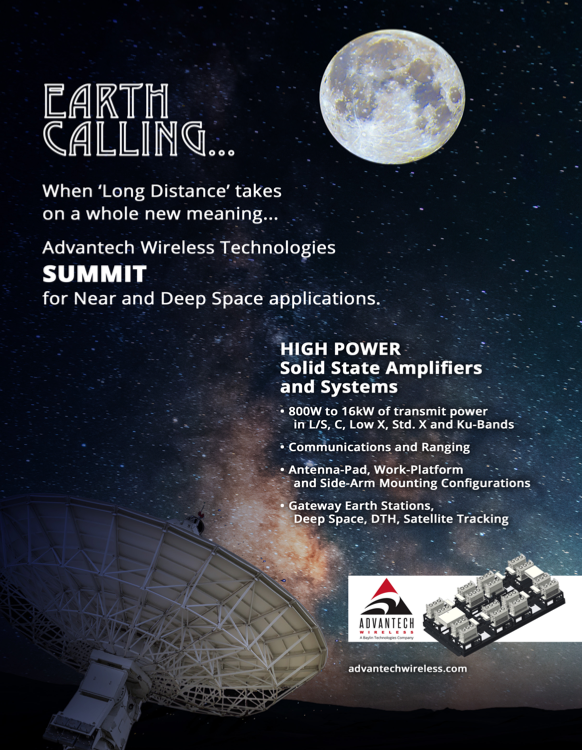U.S. Space Command Deputy Commander:
There have been three, distinct, space ages
When the U.S. Space Force and the second incarnation of the U.S. Space Command were stood up in 2019, it was a monumental step forward for the defense and security of America’s critical space systems and capabilities that either reside in or rely on the domain.

However, for Lieutenant Gen.eral John E. Shaw, Deputy Commander of the U.S. Space Command, 2019 was not the beginning of a new era in space, but rather a benchmark within what he refers to as “The Third Space Age.”
During a recent Mitchell Institute Schreiver Spacepower Forum, Gen.. Shaw sat down with Gen.. Kevin P. Chilton (Ret.) to examine the three, distinct, Space Ages that the U.S. Government (USG) and military have operated within. They also discussed the role that commercial space has played during the most recent Third Space Age where the domain has become contested by adversarial actions and threats.
The Three Space Ages
From Gen. Shaw’s viewpoint, there have been three Space Ages so far. He explained that the first Space Age began at the start of the Cold War and was primarily focused on national security and scientific exploration through the Apollo missions.
Gen. Shaw noted that during this era there was little to no commercial presence. The commercial space industry would not be involved until cable television took off during the tail end, which represented industry’s initial footprint in the domain.
“[Commercial space] was very nascent in that time,” said Gen. Shaw. “We all wanted our MTV.”
Toward the closing of the Cold War, there was an inflection point that Gen. Shaw attributes to the dawn of the Second Space Age.
“What had been our adversaries in the space domain ended up partnering with us to do the International Space Station,” said Gen. Shaw.
Those collaborations represented the Second Space Age from a civil standpoint, but from a national security standpoint, it wasn’t until the Gulf War that space was truly leveraged for military missions.
“The Gulf War happened right at that inflection point,” said Gen. Shaw. “That was also where I began and spent most of my career delivering space capabilities to the tactical level: GPS, ISR, missile warning, etc.”
According to Gen. Shaw, this era also saw a spike in commercial space activity. Commercial companies already had been doing work in Geosynchronous Orbit (GEO) by then, but during this period, they began to experiment in Low Earth Orbit (LEO), as well.

“But the government capabilities were still sort of the premier capabilities that we knew of and used,” said Gen. Shaw. “We leverage... commercial activity and capabilities across the spectrum – SATCOM, space domain awareness, and imaging – in ways that we never really did earlier... There’s a dependence that we have on them now that is part of our broader force set that we bring.”
The Third Space Age, according to Gen. Shaw, began around 2015 when commercial space companies began to test and demonstrate extraordinary capabilities that had never been seen before. This was a time when the world saw its first operational large-scale satellite proliferation in LEO.
Another major marker of this Third Space Age was the realization that the space domain was no longer a benign environment.
“It was in 2015 that we first started talking publicly…that there were now threats in the domain,” said Gen. Shaw.
The Contested Space Domain
Though space as a warfighting domain may not have been publicly discussed until 2015, there was plenty of evidence of that fact before then.
“In 2007, we had the Chinese do an ASAT test,” said Gen. Chilton. “But it takes us eight years to finally come to admit that, yes, it is indeed a warfighting domain?”
And adversarial actions in the space arena have only escalated since that time. As Gen. Chilton also pointed out, U.S. adversaries and near-peer competitors in recent years are demonstrating aggressive capabilities that could jeopardize the security and safety of American assets in space.
“Today, U.S. Space Command now operates in a domain where threats are on the rise,” said Gen. Chilton. “Adversaries like China are increasingly seeking to contest this domain. Their capabilities include everything from ground-based direct ascent missiles, to electronic warfare, jamming, and co-orbital rendezvous satellites. The impact on U.S. national security interests is significant.”
Gen. Shaw explained that the realization that the U.S. needed to be prepared to defend against adversarial threats in space led to the creation of the U.S. Space Force and U.S. Space Command. During the forum, he addressed some of the pessimistic viewpoints surrounding the creation of the Space Force in 2019.
“There were a lot of naysayers at the time,” he said. “Was this a good idea? But looking back, it was a brilliant move.”
“Today, U.S. Space Command operates in a domain where threats are on the rise. Adversaries like China are increasingly seeking to contest this domain. Their capabilities include everything from ground-based direct ascent missiles, to electronic warfare, jamming, and co- orbital rendezvous satellites. The impact on U.S. national security interests is significant,” said Gen.Chilton (Ret.).
According to Gen. Shaw, all of the challenges that the government acknowledged in 2015 have only continued to advance and grow.
“If we were trying to stand up the Space Command and Space Force now, four years later, we would be much further behind in addressing these threats, making the environment more secure for all the participants that are going to be there, and strengthening all those partnerships across all the sectors,” said Gen. Shaw.
Commercial Space In The Third Space Age
Gen. Shaw noted that the Third Space Age has really brought all of the space sectors together in a unique way that was never before witnessed in the first two Space Ages.
“Another interesting dynamic in this Third Space Age… is all of those sectors – civil, scientific, commercial, and national security – are now interdependent in ways they certainly weren’t in the First Space Age, and mostly not in the Second Space Age,” said Gen. Shaw. “We leveraged from a national security perspective, commercial activity and capabilities across the spectrum – SATCOM, space domain awareness, and imaging – in ways that we never really did earlier, to a greater degree. There’s a dependence that we have on them now that is part of our broader force set that we bring.”
As for the specific relationship the USG and military have with the commercial space industry, Gen. Shaw describes it as a solid partnership.
“We’re in a symbiotic relationship with commercial space today,” he said. “We support them and their operations to operate safely and securely, but they also provide capabilities to us.”
He explained that the SATCOM, imagery and Space Domain Awareness (SDA) capabilities that industry provides to the government and military are extremely critical.
“We rely on commercial imagery now more than we ever have,” said Gen. Shaw. “In those early days of the Ukraine conflict, I think we all watched the news stations that were showing imagery of that Russian convoy that was stalled outside Kyiv…Was that declassified NRO government imagery that we were seeing on the news? That was not. It was commercial, and it was pretty timely.”
Gen. Shaw went on to say that the advancements coming out of the commercial space industry are not only impressive, but they are promoting global transparency among the world governments.

“It was achieving more than just a news need,” said Gen. Shaw. “It was actually achieving an international awareness need.”
This article first appeared in Government Satellite Report and is republished with permission of GSR and SES Space & Defense.
Author David Pesgraves is a Staff Writer for GovSat Report, in addition to several other online publications dedicated to defense, military, and federal government agency technologies.


